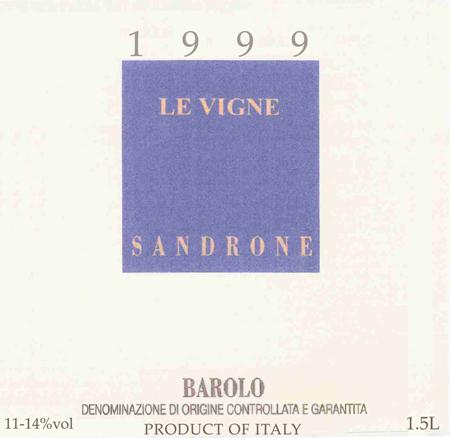1999 Barolo Red Blend
Sandrone Le Vigne is a captivating red blend from the esteemed Barolo region, crafted in the exceptional 1999 vintage. This wine showcases a deep, garnet red hue that reflects its age and complexity. On the nose, it unveils an enchanting bouquet of dark fruits, dried roses, and earthy undertones, hinting at its nuanced flavor profile. The palate reveals a rich tapestry of flavors, with ripe cherries and blackberries intermingling beautifully with notes of leather and spices, creating a truly harmonious experience. The mouthfeel is robust yet elegant, with a structure that features well-integrated tannins, providing a firm backbone while allowing the fruit to shine. With a balanced acidity that provides liveliness and a long, lingering finish, Sandrone Le Vigne is a timeless testament to the artistry of Barolo winemaking, perfect for savoring on special occasions.
Sandrone Le Vigne is a captivating red blend from the esteemed Barolo region, crafted in the exceptional 1999 vintage. This wine showcases a deep, garnet red hue that reflects its age and complexity. On the nose, it unveils an enchanting bouquet of dark fruits, dried roses, and earthy undertones, hinting at its nuanced flavor profile. The palate reveals a rich tapestry of flavors, with ripe cherries and blackberries intermingling beautifully with notes of leather and spices, creating a truly harmonious experience. The mouthfeel is robust yet elegant, with a structure that features well-integrated tannins, providing a firm backbone while allowing the fruit to shine. With a balanced acidity that provides liveliness and a long, lingering finish, Sandrone Le Vigne is a timeless testament to the artistry of Barolo winemaking, perfect for savoring on special occasions.




